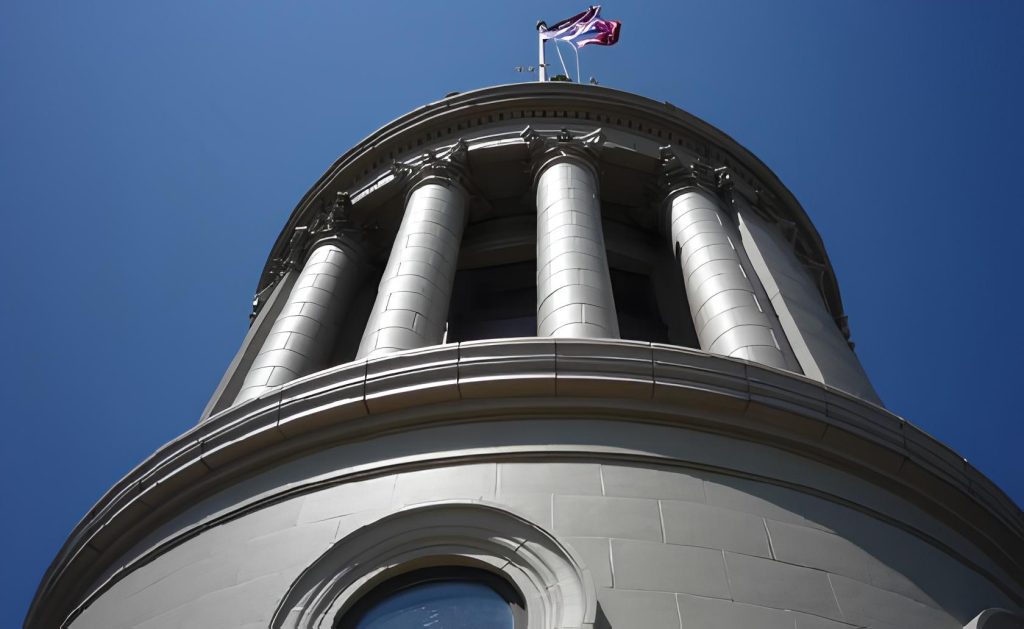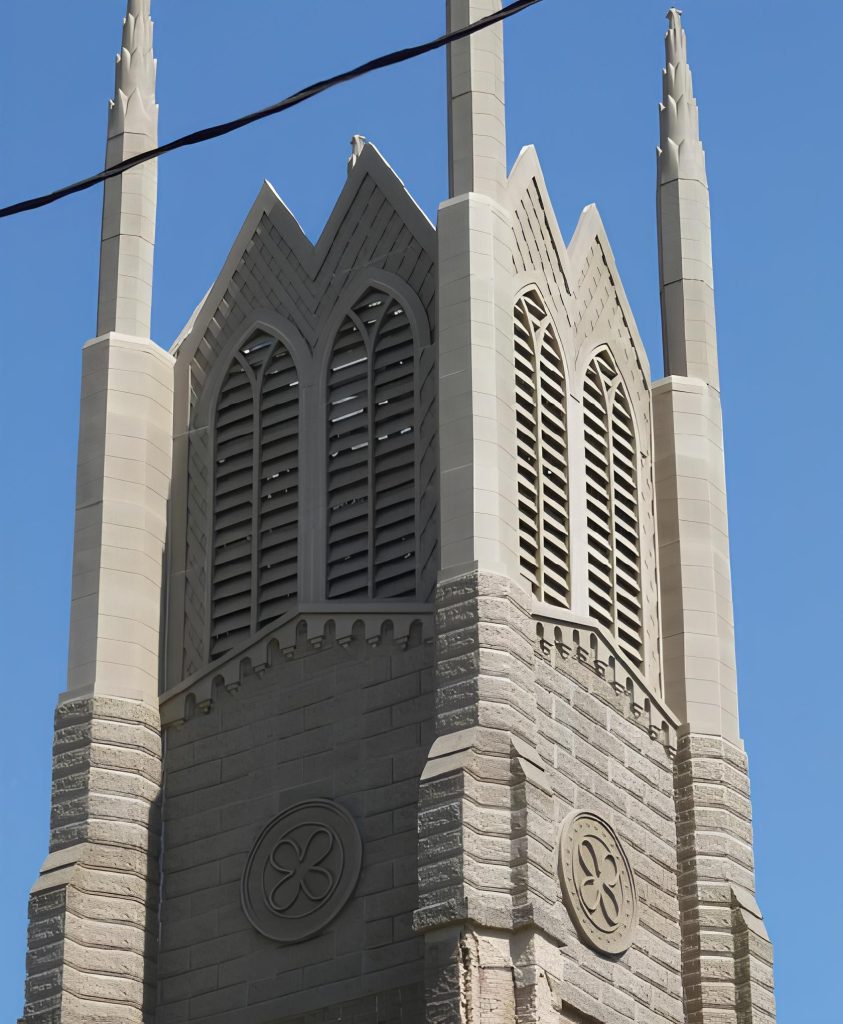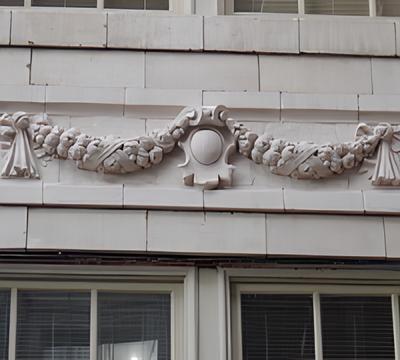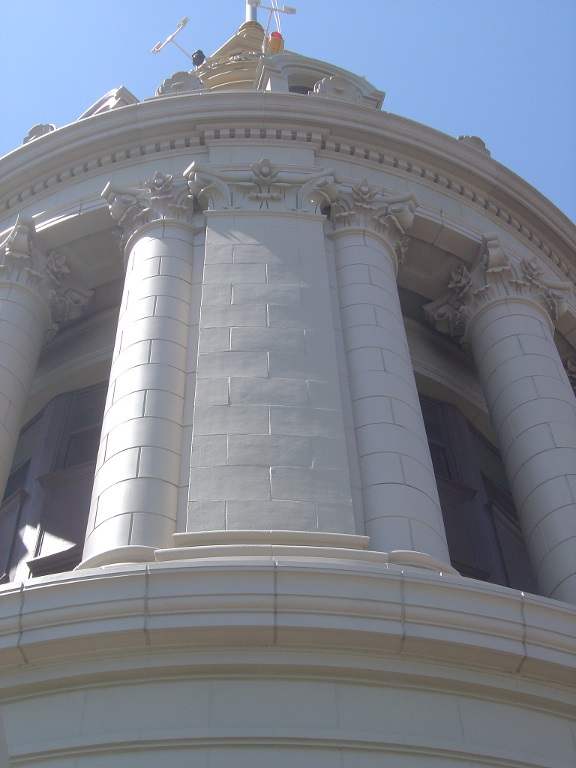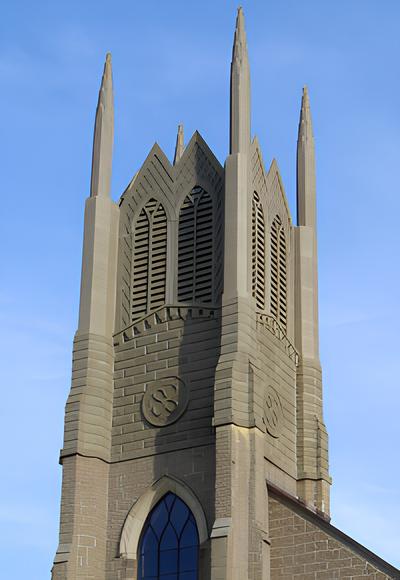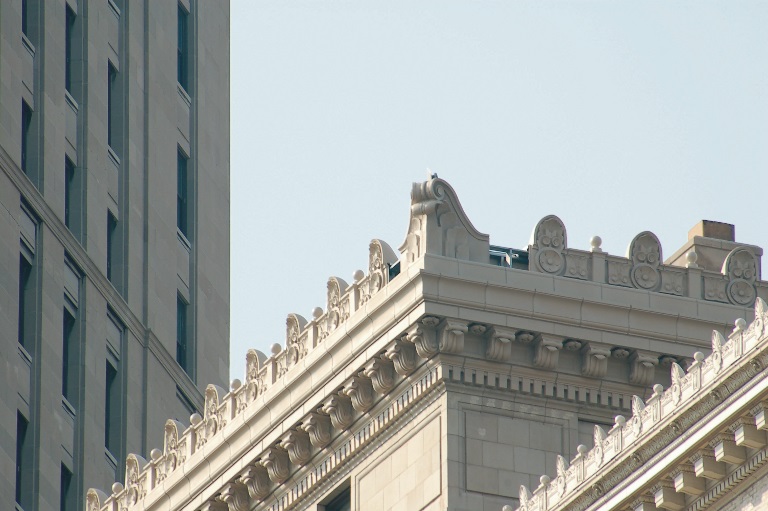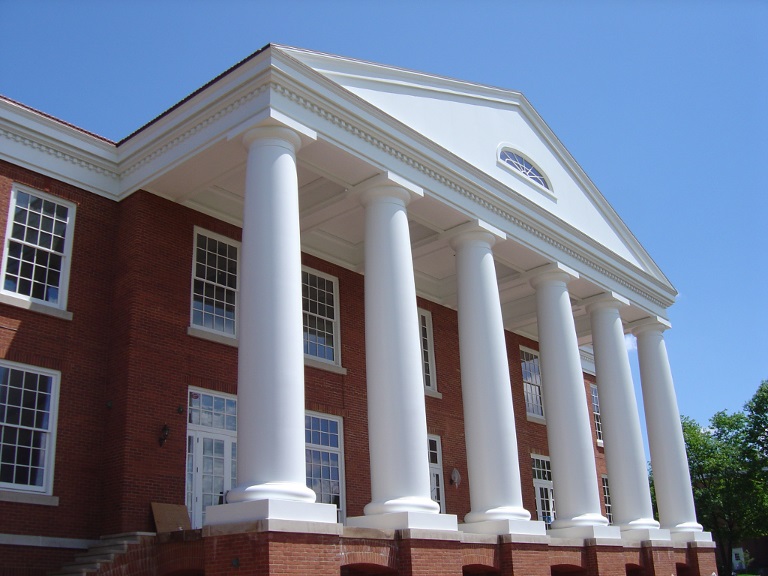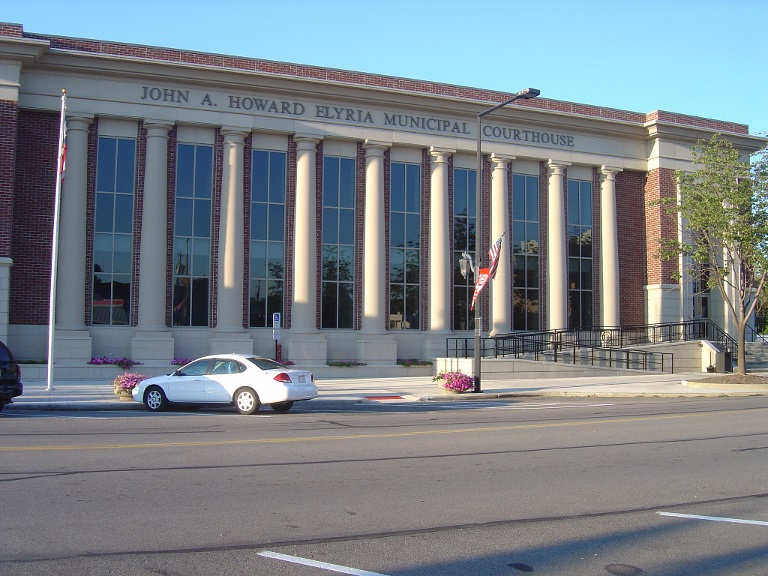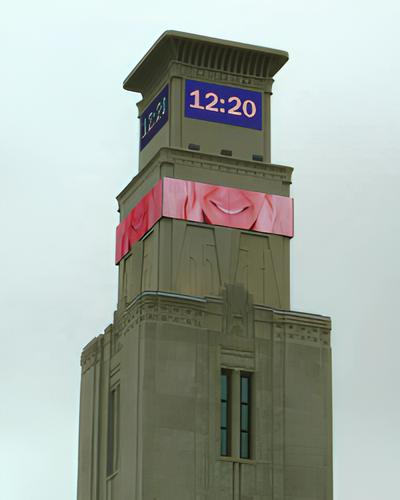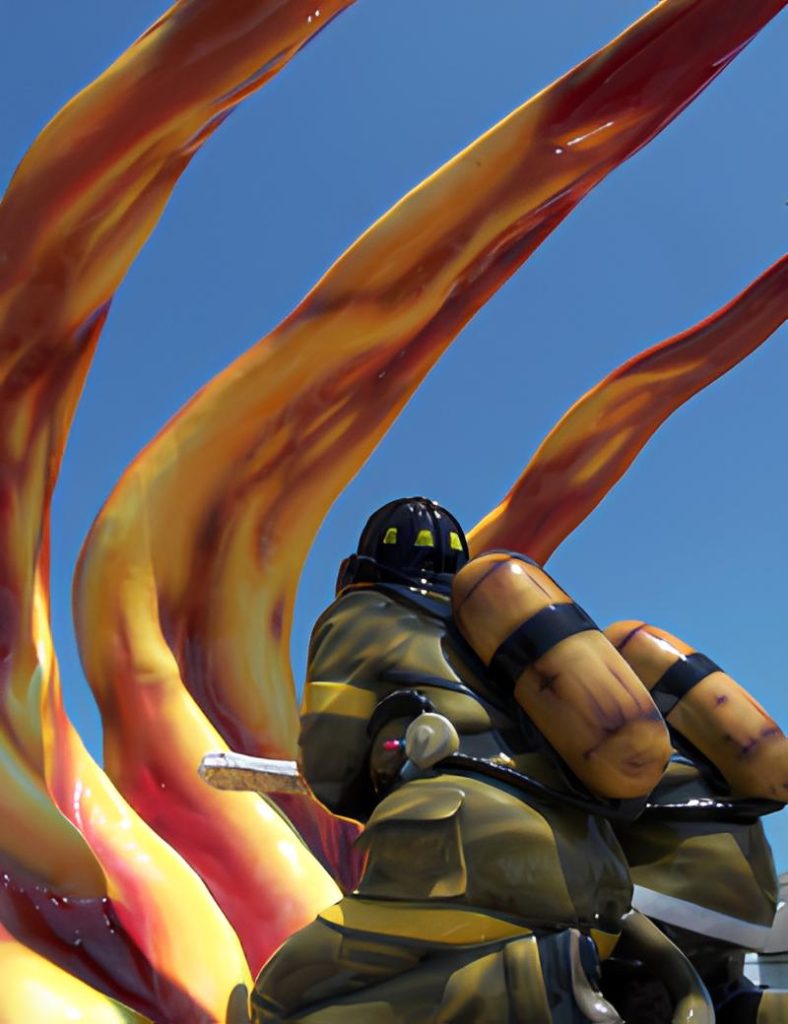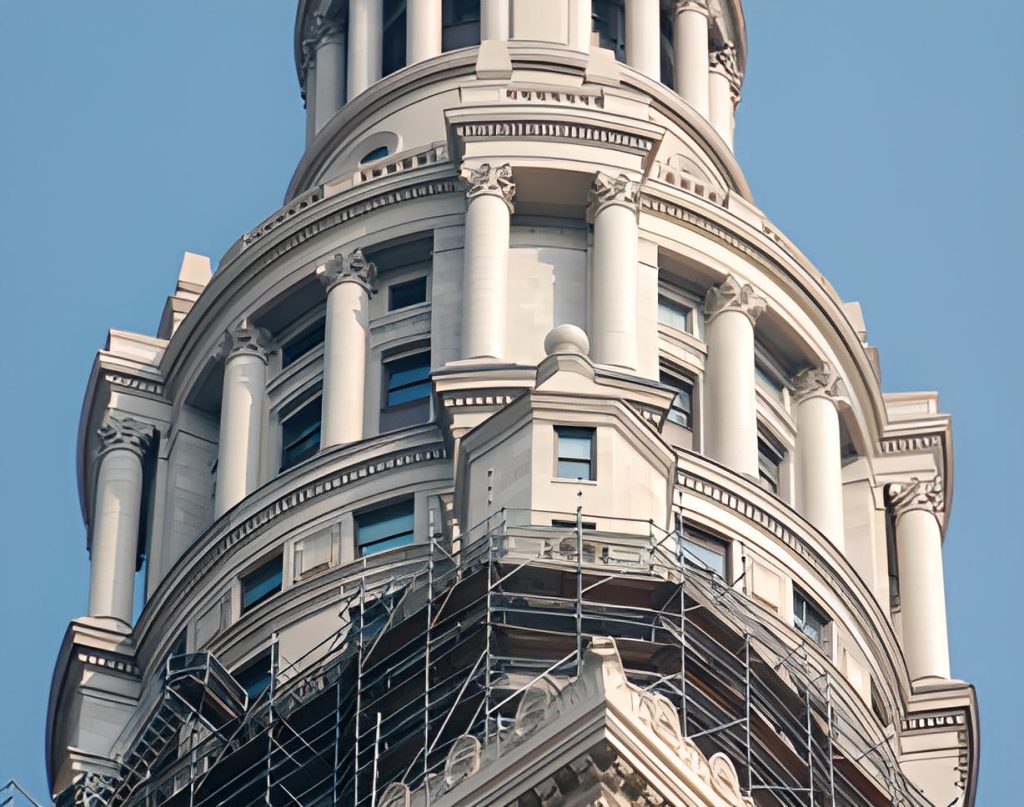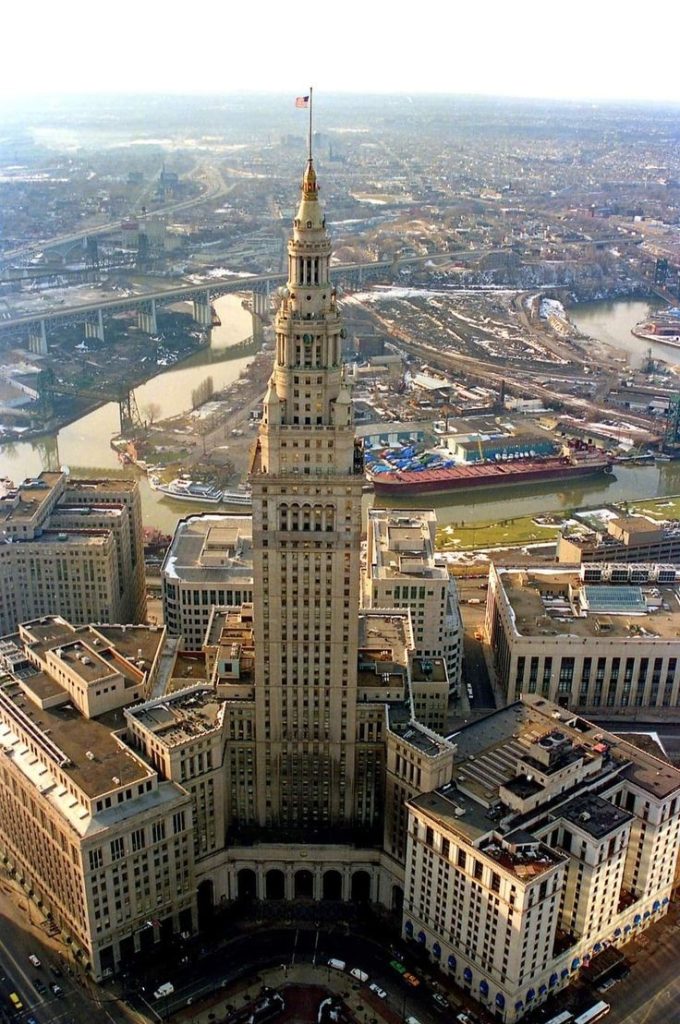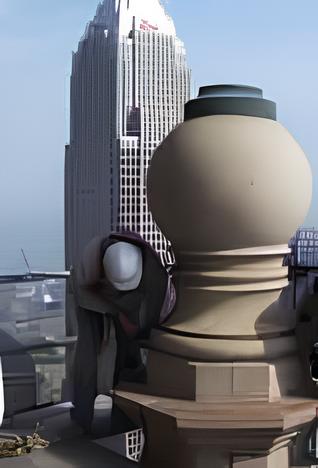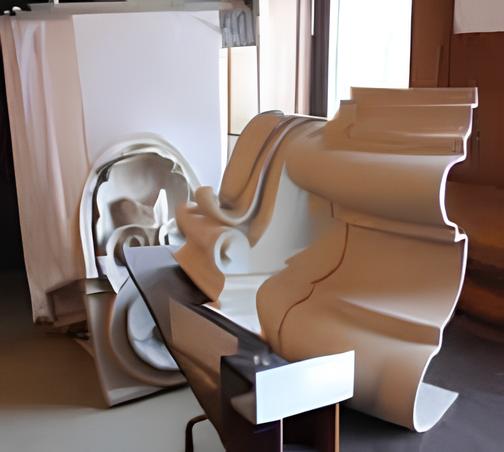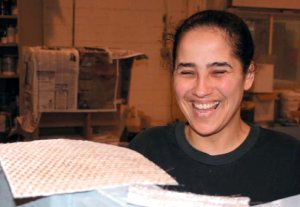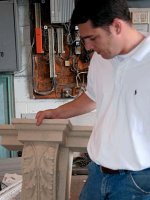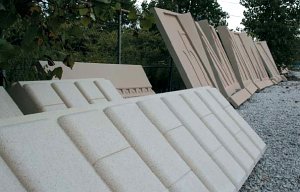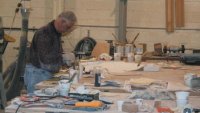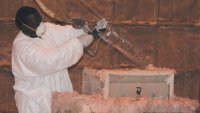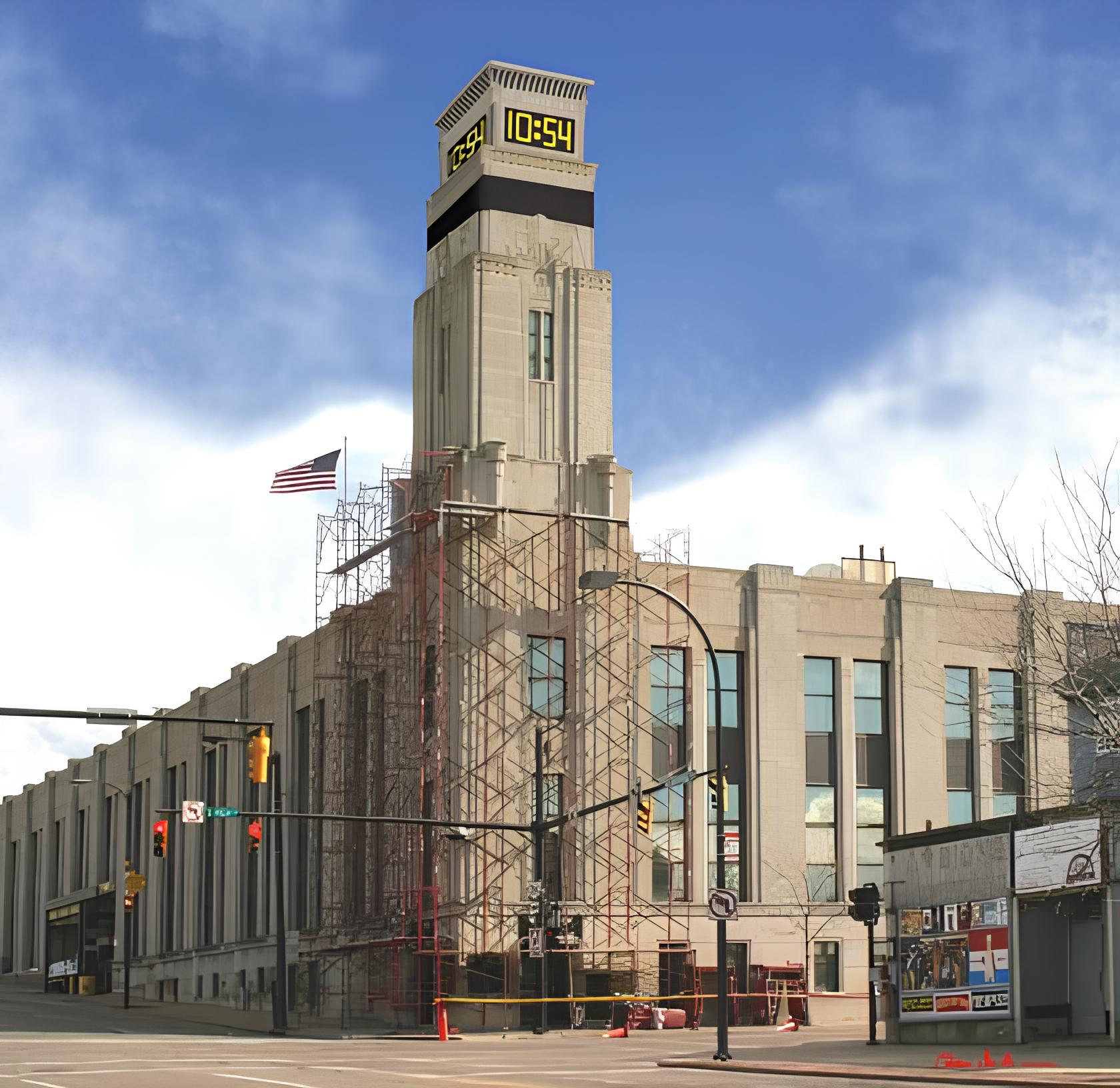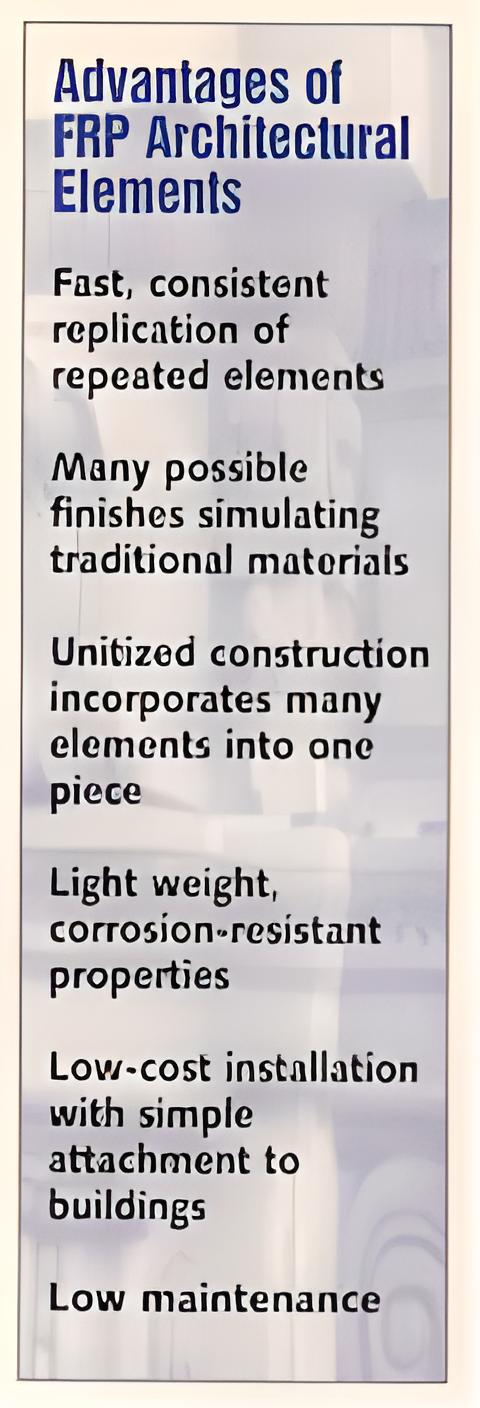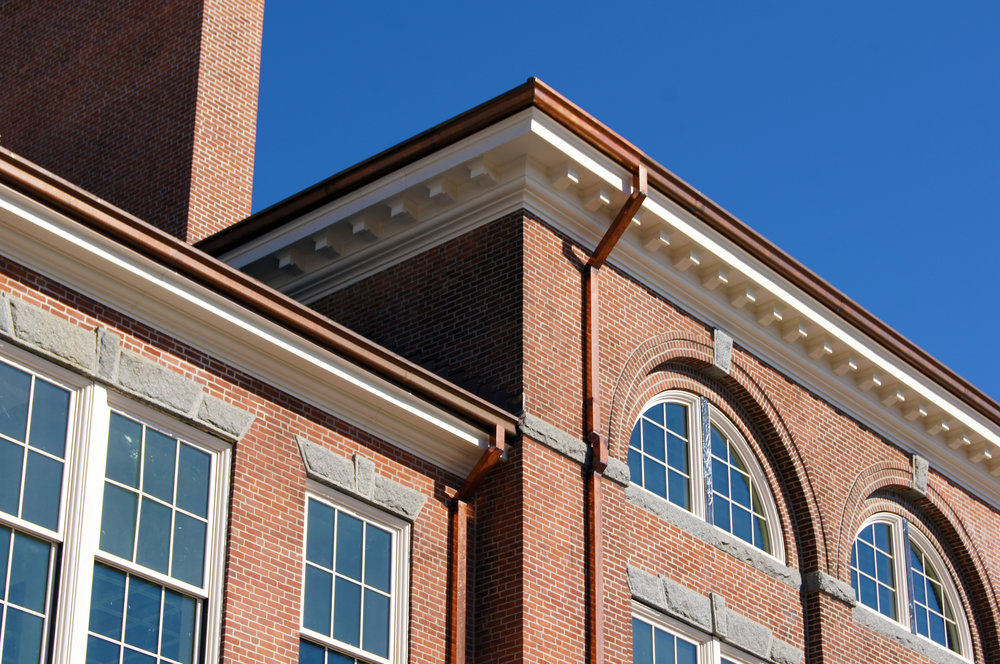The balustrade on the rear façade of The White House has been restored using fiberglass components. Other landmark buildings now sporting fiberglass elements include the Plaza Hotel and the Equitable Building in New York City, the James Flood Building (see Figure) in San Francisco, St. Joseph Cathedral in San Jose and many others.
When faced with the replacement of deteriorating 70-year-old terra cotta cornices and window sills for the 40-story Equitable Building, owners feared that the New York City Landmarks Preservation Commission would require replacement with new terra cotta. However, Joe Micceri, restoration manager for the building’s owner, couldn’t find anyone qualified and able to produce the 62,000 square feet of terra cotta needing replacement. Architects for the project suggested fiberglass replacement and won approval from the preservation agency.
However, Micceri remained skeptical and required the work to be done in phases. After several years of work and $13 million, the deteriorated terra cotta was replaced with fiberglass elements produced by Rocca & Noto Inc. ( Long Island City, N.Y.), which has now adopted the name Architectural Molded Composites Inc. No longer skeptical, Micceri says, “I’m very satisfied with the material; it blends in so beautifully that nobody knows the difference if I do not point it out.” More than 10 years after installation, Micceri reports no problems with the fiberglass material and praises its
Outfitting New Buildings
Fiberglass are also being specified for new buildings. The Taj Mahal Casino ( Atlantic City, N.J.) and many other “theme” structures sport glitzy fiberglass decorative elements. In addition, new buildings replicating a period look are receiving fiberglass ornamentation.
A 10,000-square-foot Georgian-style residence in Jacksonville, Fla., is currently receiving fiberglass cornices. According to Mitchell McDaniel of Jacksonville-based McDaniel Contractors Inc., comparable wood or stucco cornices would cost at least twice as much as the fiberglass systems when material and installation costs are considered. McDaniel contacted several fiberglass manufacturers to find suitable stock molds for two different styles and sizes of cornices. The building has already received approximately 120 lineal feet of a cornice supplied by Architectural Fiberglass. Installation of this 4-ft-high by 2-ft-deep cornice was filmed for a recent broadcast of “Remodeler’s Showcase,” a television show available via cable and satellite. A smaller cornice produced by EDON Fiberglass ( Horsham, Pa.) has been scheduled for installation.
Residential uses are not for everyone, though. McDaniel estimates that ornamentation with these types of fiberglass cornices is restricted to residences costing $500,000 or more.
Design Considerations
When incorporating fiberglass architectural elements, several factors should be considered, not the least of which is aesthetics. To complement the architectural style of the building, the appropriate finish should be selected. Fiberglass can be molded into a number of different finishes to mimic wood, stone, terra cotta, concrete, steel or other materials. Additionally, in instances when people will interact directly with the elements, it is necessary to take into account the texture and solidity of the material. For example, polymer concrete works well as a substitute for many types of stone and concrete.
Manufacturers now provide a wide variety of stock elements. However, if an exact replica is needed, custom design and fabrication services are available. Loading (due to wind, snow, earthquake, pedestrians, and workers) and structural attachment of the fiberglass to the building must also be examined.
When decorative elements will be attached to an existing building, precise building measurements are crucial. Architectural Fiberglass Corp. prefers to have its own employees take measurements on site to ensure that any potential problems are identified before the elements are molded.
Fiberglass Specialties Inc. ( Henderson, Texas) integrated a number of different finishes when it produced a roof, cupola, and spire for the Stevens Institute of Technology in Hoboken, N.J. The project successfully replicated the look of slate shingles, copper and sandstone to match other parts of the existing building. After assembly on site, the entire roof, cupola and spire were lifted in one piece and placed atop the masonry tower. Three hours later, installation of the 18-ft wide, 45-ft tall structure was completed by bolting it to the existing masonry.
Element Design
Manufacturers have several design choices when creating decorative elements. In Fact, architects and contractors often request help from fiberglass manufacturers when writing the element specifications. For example, when specifying a cornice surrounding the top of a building, designers must consider how the
cornice joints coordinate with other linear elements on the building installation to determine the optimal number of sections. Cornice sections are usually 4 to 10 ft long and 12 to 60 inches tall.
The method of joining sections is also considered. When lap joints are used, one edge of a section overlaps the edge of an adjoining section. In contrast, when butt joints are used, the sections meet but so not overlap. Architectural Fiberglass Corp. prefers to build butt joints with full-depth walls (returns) at both ends of every cornice section. Once installed, the end returns of each roofed cornice section completely enclose a portion of the building. This design creates self-reinforcing modular rigid sections that often need no internal bracing. The full-depth returns (typically 6 to 42 inches deep ) also provide structural support to the roof of the cornice. Another advantage of this design is greater fire protection, since the use of flame-retardant resins in the end returns creates natural fire stops between cornice sections.
In contrast to butt joints with end returns, lap joints may be designed to fit sections together. On each cornice section, one edge steps down; the other edge is flat so that it will overlap the stepped edge on the adjacent cornice section. One advantage of these joints is that the sections can be cut in the field to the exact length needed. Because they use less material, the as-manufactured cost of this design is typically lower. However, the use of lap joints may increase installation costs, especially if internal bracing between the building and the fiberglass sections is required. Thermal expansion of different materials must also be considered when using internal bracing.
Manufacturing Process
Spray-up is the most commonly used manufacturing process for architectural elements. At Fibertech Corp. (Pendleton, S.C.), approximately 80 to 85 percent of the company’s architectural moldings use spray-up techniques, reports production manager Ray Longnecker.
Molds are commonly made of fiberglass and flexible rubber. Open fiberglass molds provide the most stability and can withstand higher volume use without distortion. Rubber molds are less dimensionally stable but provide more flexibility for making parts containing undercuts.
The most commonly used gel coat or exterior architectural applications is UV-inhibited NPG (neopentaglycol) isophthalic gel coat, which gives the best resistance to weather and UV light. The color of the gel coat can be customized to match the building, other decorative elements on the building or the caulk that will be used to seal joints between element sections.
Two types of resin are typically used for architectural elements. General purpose polyester resins are least expensive, but they are not formulated to retard fire. Class I flame-retardant polyester resins are formulate to meet the Class I standards, as defined in the ASTM E84 test method for measuring flame spread.
End-grain balsa wood is sometimes used in sandwich core FRP construction to produce additional stiffness. Wittman recommends sandwich core construction whenever a flat surface is more than 12 inches square.
If the finished part will be installed as a corner element, one of two manufacturing processes can be used. If only a few corners are needed, two straight pieces can be molded, miter cut and joined together. Architectural Fiberglass Corp. typically lays up fiberglass mat inside the corner to strengthen the joint. If quantities dictate, a corner mold can be built to produce a one-piece corner.
Installation
To facilitate installation, most manufacturers pre-fit pieces at their facility before shipping them to the site. Typically, adjoining sections are numbered and sent with a diagram showing the location of each piece. Careful shipment and handling of the bulky fiberglass shells is needed to prevent distortion or breakage.
Lightweight architectural elements are usually fastened to the building using screws or bolts. Masonry screws or bolts can attach the fiberglass elements directly to the building. More frequently, screws fasten the fiberglass to treated wooden blocks that are preinstalled on the building. To resist corrosion, all fasteners should be stainless steel, galvanized or coated with a corrosion-resistant material. In special cases where the decorative element does not include its own “roof,” special internal bracing may be built to attach the element to the building.
Since many elements are built in modular sections, a critical consideration when installing adjoining sections is to allow sufficient gaps between sections for thermal expansion. The coefficient of thermal expansion (CTE) for fiberglass is approximately 1.1×10 -5 inch/inch/ oF, which means that the fiberglass will expand and contract approximately twice as much as stone or steel. To prevent problems associated with varying CTE. Wittman suggests using a gap of 3/8-inch when sections are up to 12 feet long.
Once the fiberglass has been attached to the building, flashing is installed. Gaps between the building and the fiberglass elements are sealed with elastomeric polyurethane or silicone caulk. Gaps between element sections are also sealed.
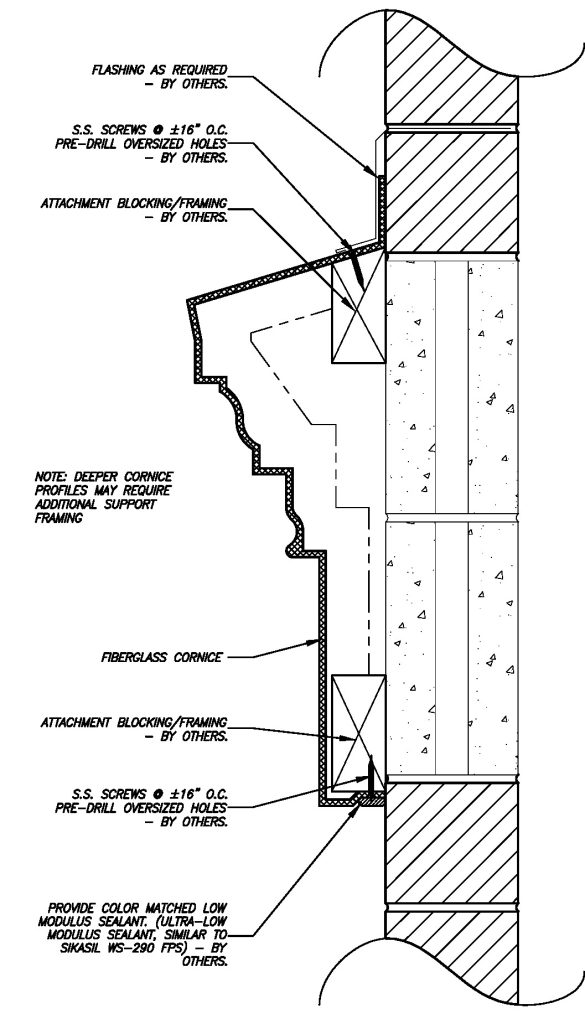
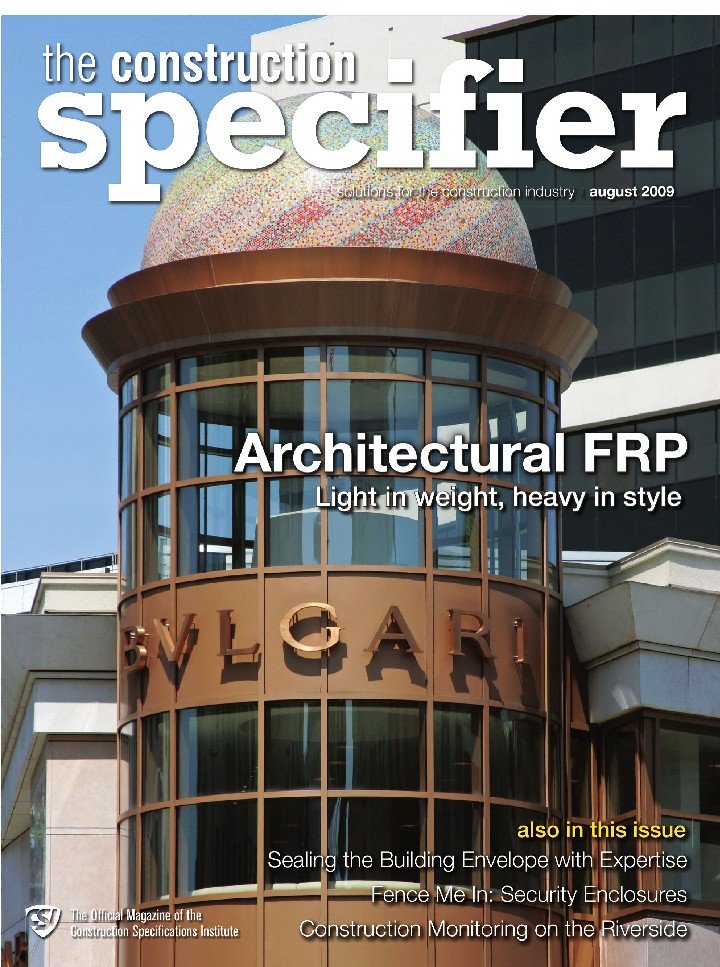

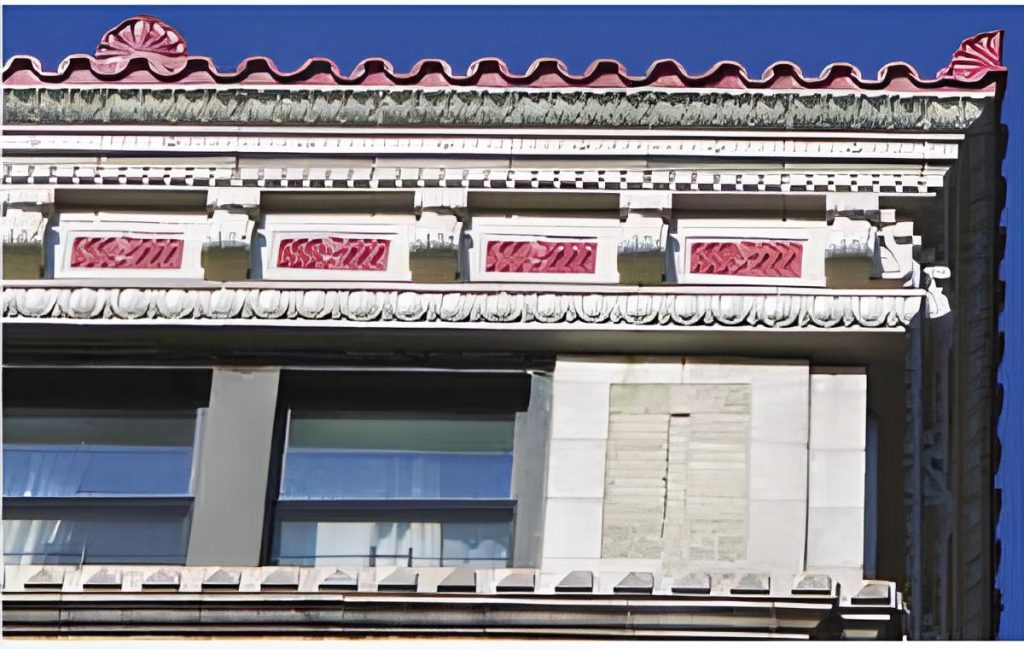
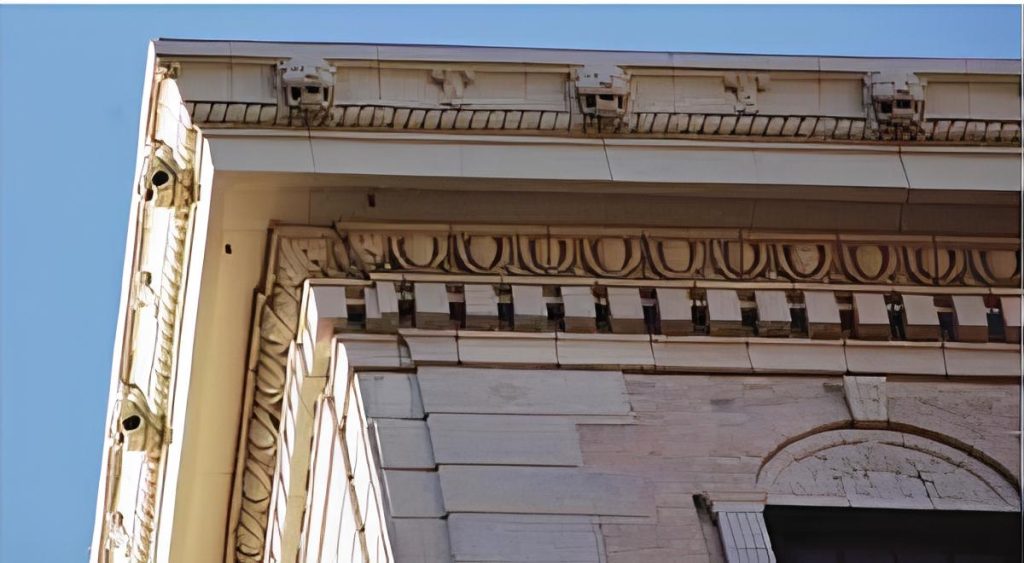
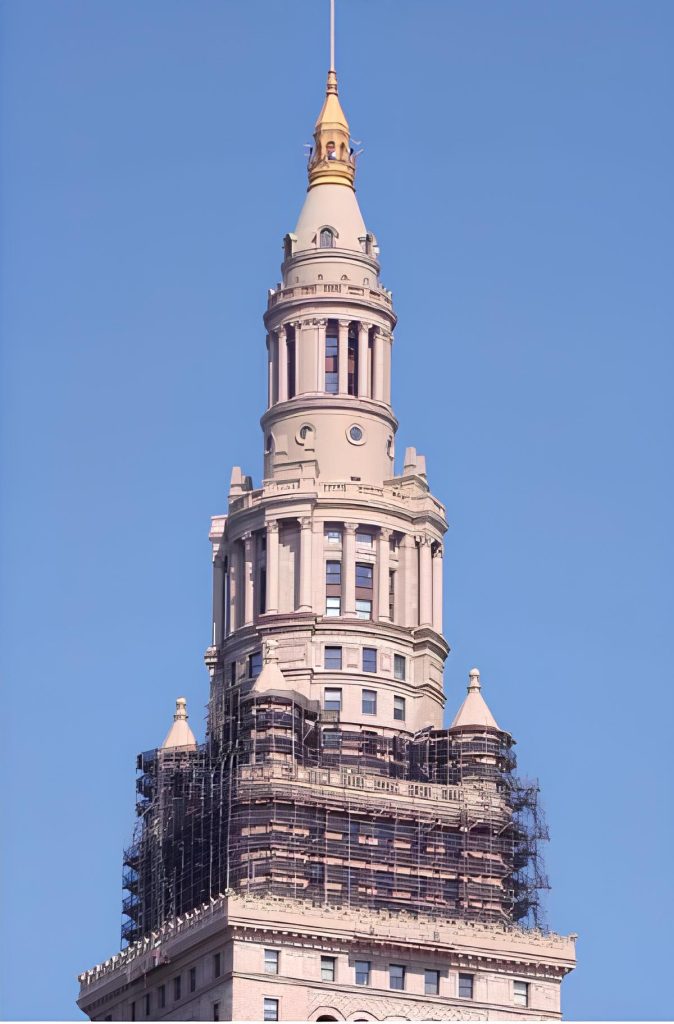
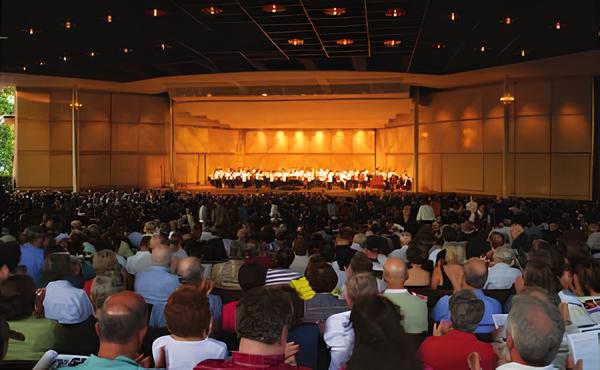
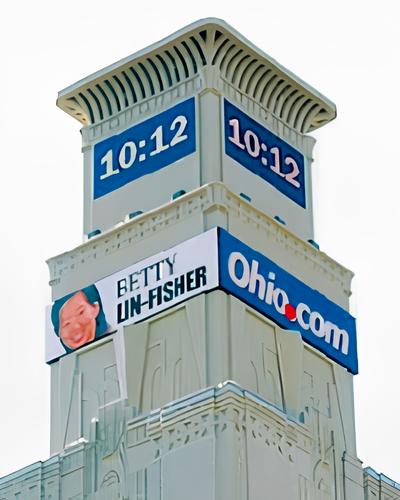
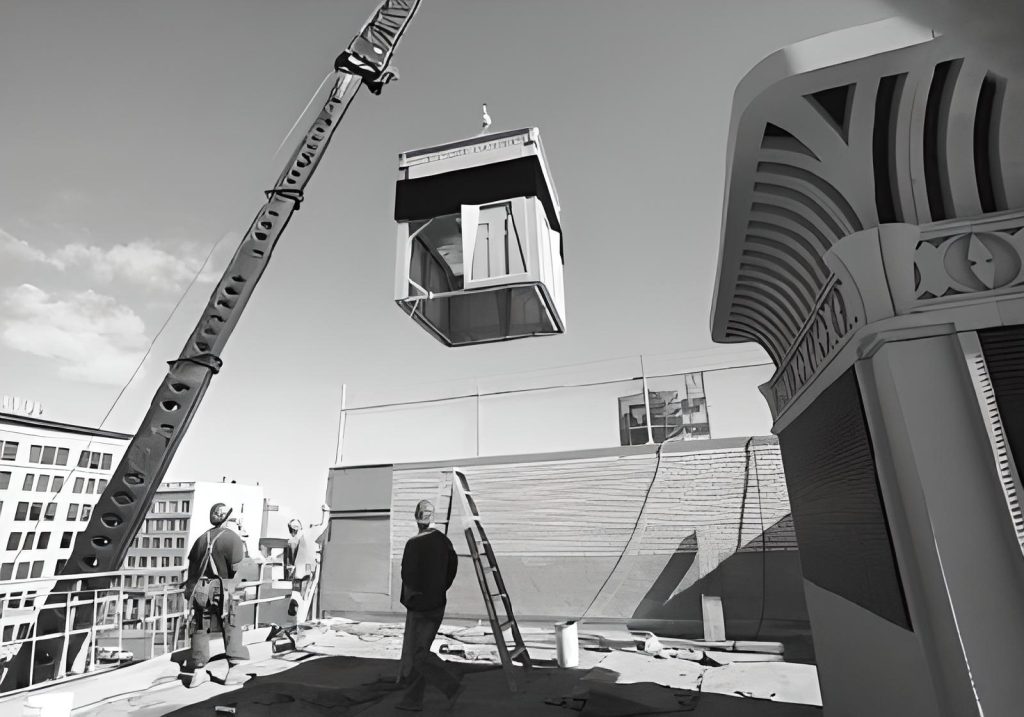
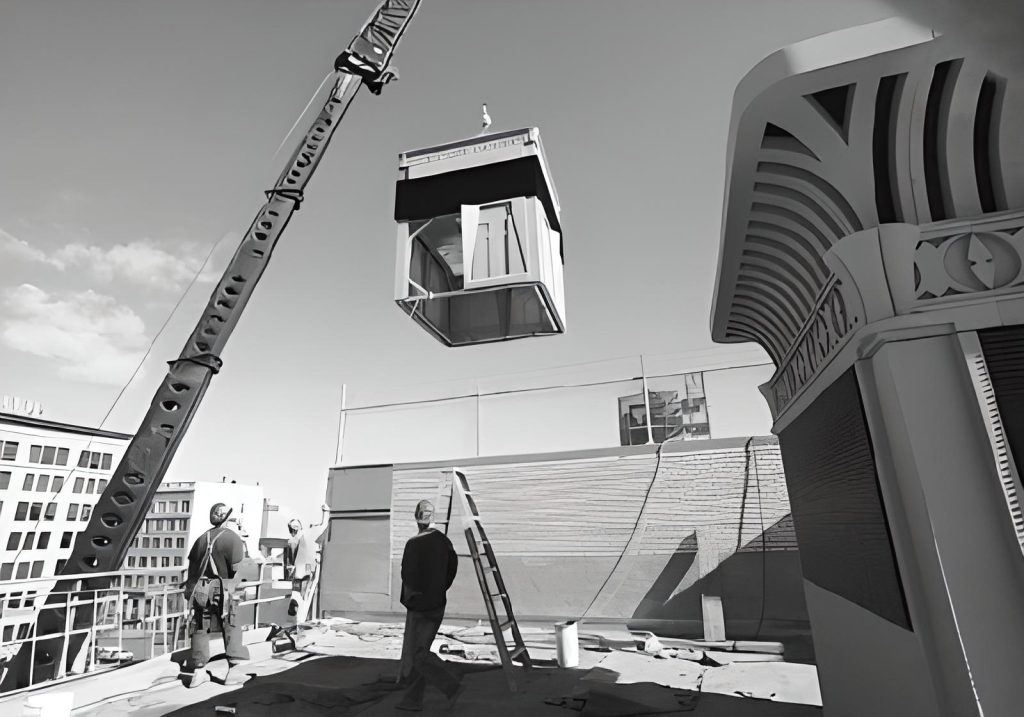
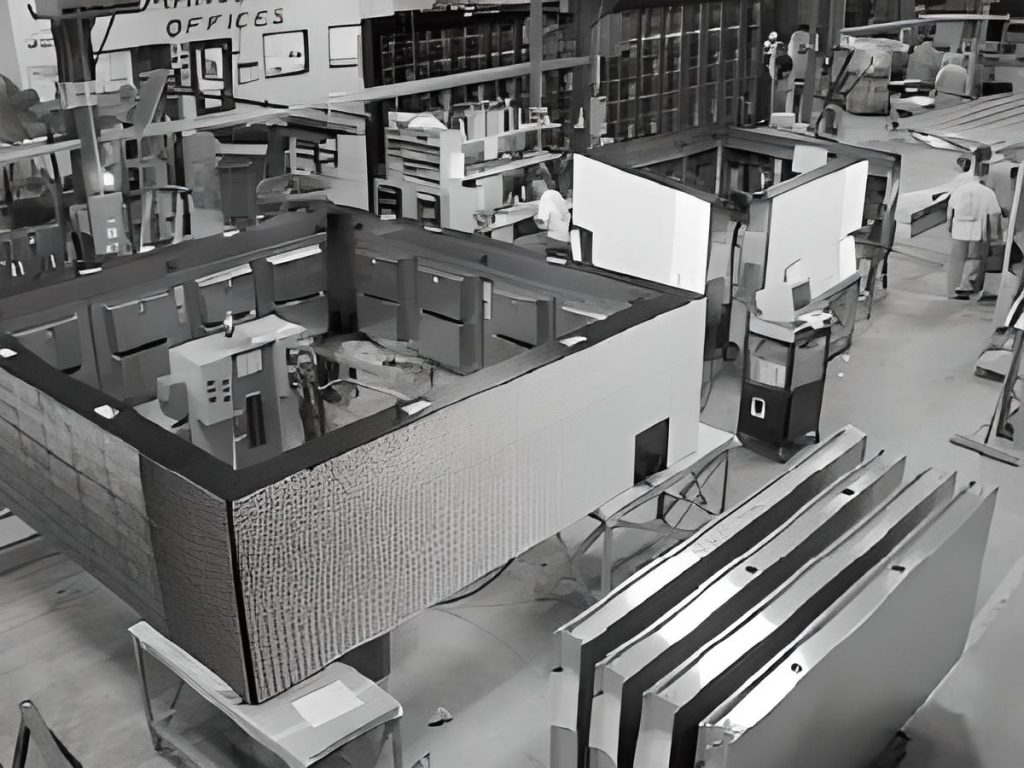
 FR 620T-20M resin and can thus label its architectural FRP products accordingly indicating compliance with fire retardancy and stringent manufacturing requirements under the IBC code. When an FRP component bears a testing laboratory’s IBC compliance label, architects and professional engineers may call out the credentialed FRP in construction plans.
FR 620T-20M resin and can thus label its architectural FRP products accordingly indicating compliance with fire retardancy and stringent manufacturing requirements under the IBC code. When an FRP component bears a testing laboratory’s IBC compliance label, architects and professional engineers may call out the credentialed FRP in construction plans.